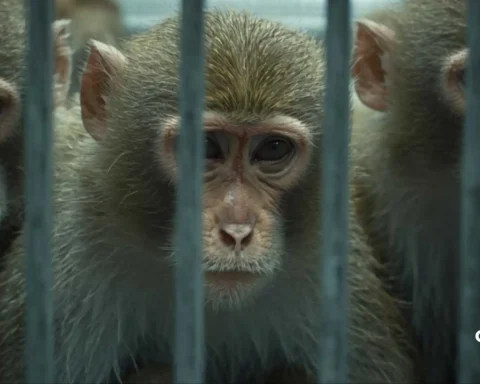An ecosystem constitutes a community of organisms and their physical environment, having an interdependent relationship. Ecosystem productivity is a critical concept that defines how energy flows through different organisms. It is classified into primary productivity, referring to the energy captured by autotrophs, and secondary productivity, involving energy transfer through heterotrophs.
Both processes play a vital role in sustaining life on Earth by converting energy into usable forms at different trophic levels. Thus, it is imperative to understand the difference between primary and secondary productivity. By understanding them, one can analyze ecosystem dynamics, food chain efficiency, and biomass distribution.
Table of Contents
Productivity in Ecological Terms and its Types
Productivity in ecology is the rate at which biomass increases per unit area. It is the rate of biomass generation, accumulation of energy, or organic matter added to an ecosystem. The standard units are ‘mass per volume per unit of time. Ecology productivity forms an ecological pyramid of energy, depicting the food web. There are two types of productivity:
Primary Productivity
Primary productivity is the rate of production at which autotrophic organisms (such as plants, algal blooms, coral reefs, and photosynthetic bacteria) convert solar energy into chemical energy through photosynthesis or chemosynthesis. It is the basis of the food chain, as non-assimilable inorganic compounds are converted to assimilable organic forms of biomass for heterotrophic life forms and higher trophic levels. Primary productivity is the rate, whereas primary production is the amount. There are some respiratory losses in the process.
Examples include terrestrial ecosystems like tropical rainforests and oceanic phytoplankton, among many others. Tropical forests have high primary productivity due to abundant sunlight and rainfall, leading to lush vegetation. Oceanic phytoplankton contribute significantly to aquatic ecosystems by capturing solar energy.

Secondary Productivity
It is the rate at which heterotrophic organisms (such as herbivores, carnivores, and decomposers) convert organic substances derived from primary producers into their own biomass. The difference between primary and secondary productivity is that in the latter, the main conversion is of one form of organic molecules to some other form of organic molecules. Herbivores that feed on plants for their food are the secondary producers. Unlike primary productivity, which is based on the fixation of energy, secondary productivity involves the transformation of already-fixed energy. There are no respiratory losses involved.
Examples of secondary productivity include herbivorous grazing animals like cows and deer, which convert plant biomass into animal tissue.
Types of Secondary and Primary Productivity
Primary productivity is categorized into two types:
- Gross Primary Productivity (GPP) – GPP is the total amount of energy captured and stored by green plants through photosynthesis. In other words, it constitutes the carbon that is fixed by the primary producers to form the total organic compound of biomass. Here, only a part of the energy goes toward plant growth, while the rest is used in the plant’s respiration and released as heat in the environment.
- Net Primary Productivity (NPP) – NPP is the energy available to consumers after subtracting the respiratory losses from GPP. It is the rate of storage of organic matter that is not used by heterotrophs. Part of biomass is successfully accumulated by the producers, although energy losses are encountered because of respiration.
Secondary production has one type to it:
- Net Community Productivity – Net community productivity or net productivity is the rate of storage of organic matter that is not used by heterotrophs. It is calculated by subtracting the energy used by heterotrophs from NPP.
Factors Affecting Ecosystem Productivity
Following are some of the factors affecting ecosystem productivity:-
- Solar energy – The amount of light energy penetrating the Earth’s atmosphere determines the rate of photosynthesis and, therefore, primary productivity. As only a limited amount of sunlight reaches the primary producers, only 50% of the total solar radiation is photosynthetically active radiation (PAR) to fulfil the energy requirements.
- Availability of nutrients and minerals – Ecosystems such as wetlands that have abundant nutrient levels of nitrogen, phosphorous, and potassium usually have high productivity because of high nutrient cycling. The availability of food resources is also an important factor in the productivity of heterotrophs.
- Water availability – As water plays an essential role in the process of photosynthesis, the presence of plentiful water is a sure indicator of the high productivity of autotrophs.
- Temperature – Temperature influences the metabolic processes of both plants and animals. Warm temperature accelerates photosynthesis and growth rate, thus enhancing the rate of productivity in primary production. The extreme temperatures and minimal source of energy, i.e., the sun energy, in arctic regions result in low productivity of biological processes.
- Natural disturbances – Natural calamities in the physical environment, like fires, floods, and hurricanes, and human activities like deforestation and pollution can have an adverse impact on the productivity of the ecosystem.
- Carbon dioxide – Carbon dioxide is one of the essential nutrients in the process of photosynthesis, and it is also a major player in the carbon cycle. Therefore, higher CO2 levels enhance primary production, although this might be constrained by other factors.
Energy moves between different trophic levels in an ecosystem following the 10% law. Only 10% of the energy from one trophic level is transferred to the next higher trophic level, resulting in a 90% loss of energy with each transfer.
Difference Between Primary and Secondary Productivity
The difference between primary and secondary productivity lies in their base-level function. Primary productivity is the rate of solar or chemical energy conversion by green plants through photosynthesis, while secondary productivity is the rate of energy transfer by heterotrophs. The organisms involved are also from different trophic levels.
The source of energy in the process of primary production is sunlight in the case of photosynthesis or chemical energy in the case of chemosynthesis. In secondary production, the source of energy is the organic matter from primary producers.
Another difference between primary and secondary productivity is their importance. The former supports all higher trophic levels, while the latter transfers energy within the food chain. The limiting factors in primary production are light, water, nutrients, and extreme temperatures, whereas in secondary production, the availability of food and metabolic efficiency are the limiting factors.
Conclusion
Both primary and secondary productivity are fundamental to ecosystem functioning, ensuring the efficient transfer of energy through food chains. This flow of energy in productive ecosystems keeps the cycle of life running systematically on the planet. While photosynthetic organisms capture and store solar energy in plant biomass (measured in mass per unit volume), secondary productivity transfers that energy to herbivores.
Understanding the difference between primary and secondary productivity helps ecologists assess ecosystem health, biodiversity, and sustainability. Variations in average productivity levels impact food availability, carbon cycling, and overall ecological balance. Studying these processes and understanding these variations can help develop better conservation strategies to maintain ecosystem stability.

FAQs
What is the difference between primary productivity and secondary productivity?
Primary productivity is the rate at which producers convert solar or chemical energy into organic material called biomass, while secondary production is the rate at which herbivores convert ingested organic material for their own production of biomass.
What is the difference between primary product and secondary product in detail?
A primary product is a raw material or natural resource obtained directly from nature, while a secondary product is a manufactured or processed good.
What is the main difference between primary and secondary success?
Primary succession occurs in lifeless areas where no soil exists and involves the gradual formation of an ecosystem from bare rock. Secondary succession happens in areas where an ecosystem previously existed but was disturbed, allowing faster recovery since soil and some life forms remain.









